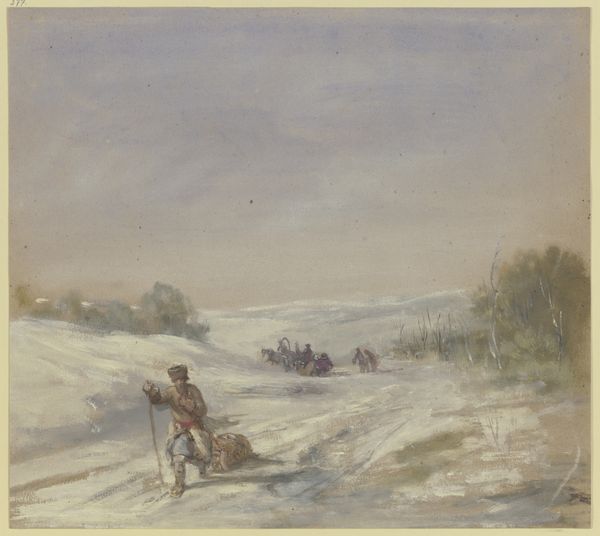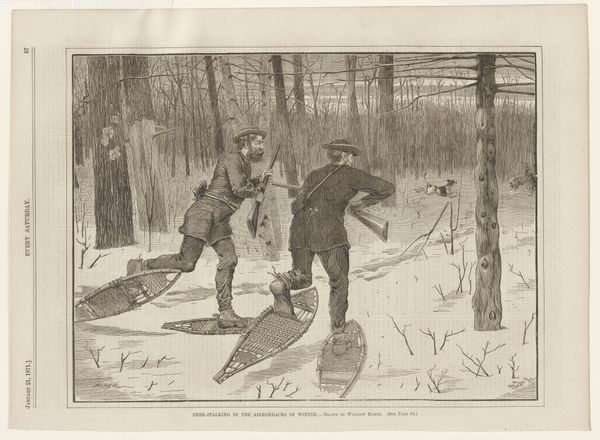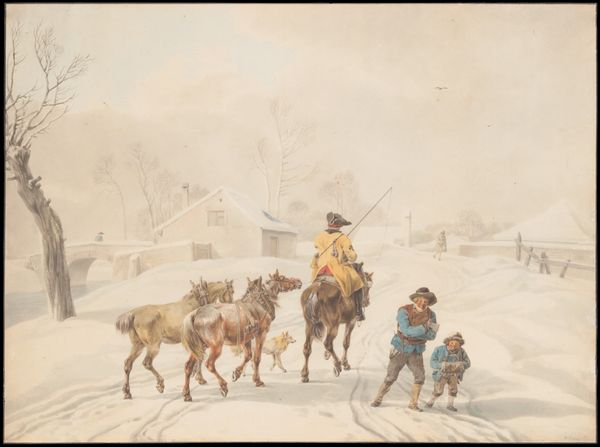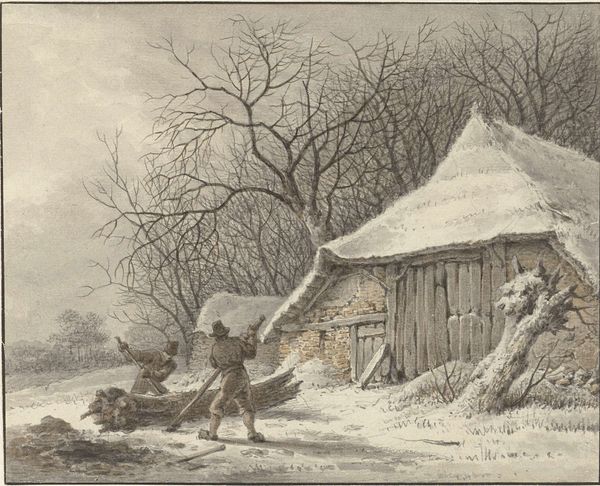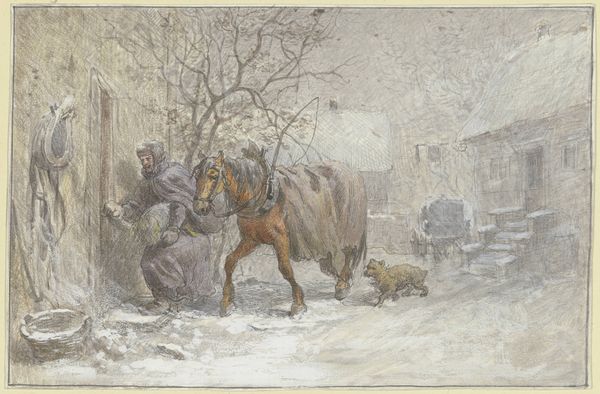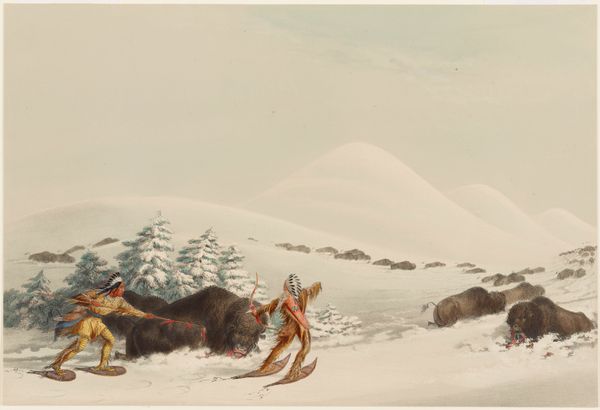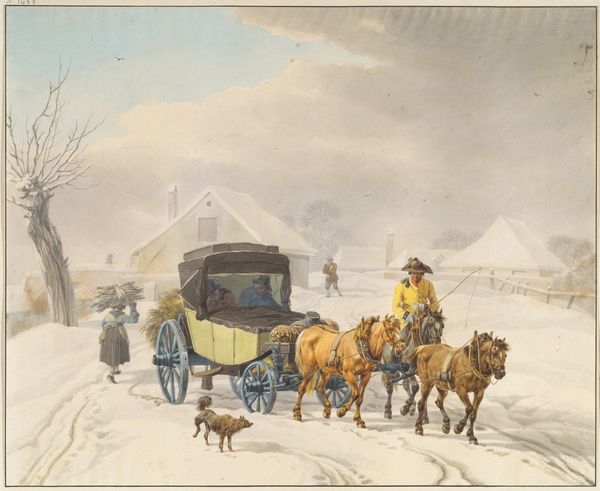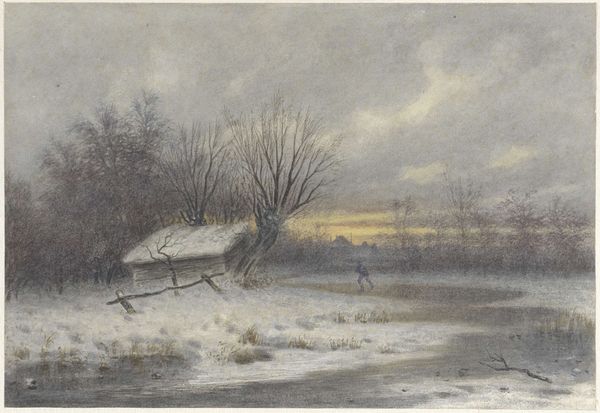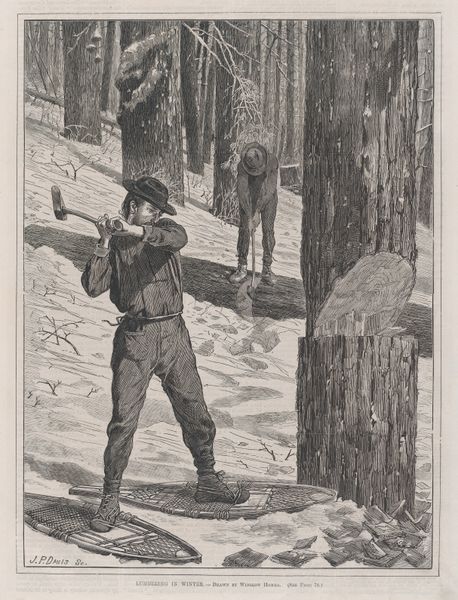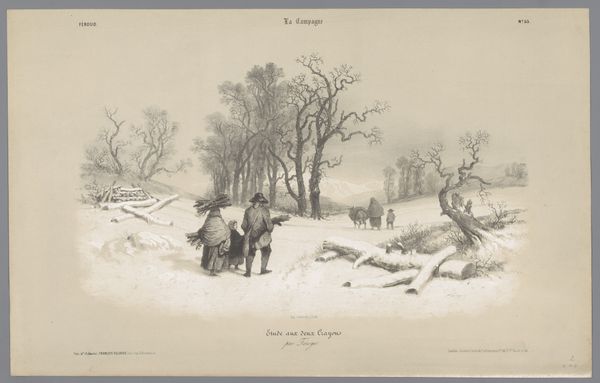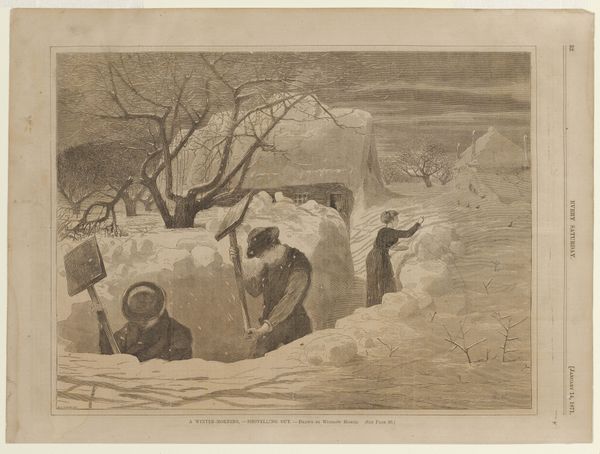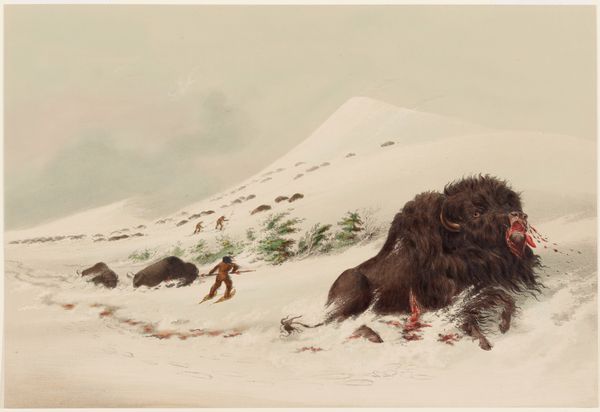
painting
#
narrative-art
#
ink painting
#
painting
#
landscape
#
genre-painting
#
indigenous-americas
Dimensions: 7 3/4 × 11 1/8 in. (19.7 × 28.3 cm) (image)8 7/8 × 11 1/8 in. (22.5 × 28.3 cm) (sheet)17 9/16 × 21 1/2 × 1 1/8 in. (44.6 × 54.6 × 2.9 cm) (outer frame)
Copyright: Public Domain
Seth Eastman created "Spearing Muskrats in Winter" in the mid-19th century using watercolor and graphite. Eastman, an artist and West Point graduate, served as a topographer and illustrator for the U.S. Army. He was assigned to different forts, where he made images of Native American life. Here, Eastman presents two Dakota men hunting in winter. The seemingly straightforward depiction of indigenous life is, of course, mediated by Eastman’s position as an outsider to Dakota culture. It was made during a period of intense cultural contact and conflict. The image evokes a sense of native people living in harmony with nature, while other Eastman paintings show scenes of warfare and treaty signings. Understanding Eastman’s art requires looking at both the paintings and the historical context in which he made them. His personal papers and the official records of the U.S. Army offer opportunities to learn more about the artist and the social and political environment that shaped his vision.
Comments
minneapolisinstituteofart almost 2 years ago
⋮
The muskrat heads peeking from the sack bode well for this hunt. A cold, white landscape still stretches ahead, but the echo of the hunters’ poses suggests a bond of camaraderie. Facing a dwindling supply of animals with desirable fur pelts, such as beaver, Native people hunted (and ate) muskrat, though its pelt earned far less at the trading company. As illustrated here, hunters stuck spears directly into muskrat dens, or axed through them. The handsome red hood, trimmed in beads and ribbon, kept snow off the hunter’s neck. This watercolor, one of 35 works on paper by Seth Eastman in Mia’s collection, was the basis for an illustration in Henry Rowe Schoolcraft’s massive "Historical and Statistical Information Respecting the History, Condition, and Prospects of the Indian Tribes of the United States" (Philadelphia: Lippincott, Grambo & Co., 1851-57).
Join the conversation
Join millions of artists and users on Artera today and experience the ultimate creative platform.
